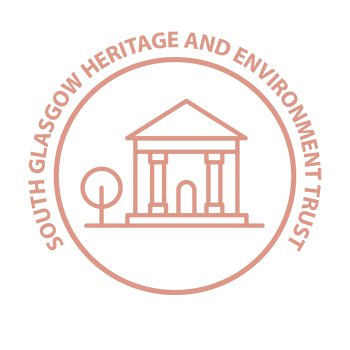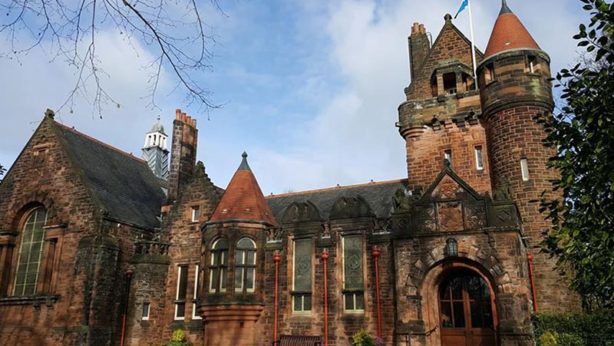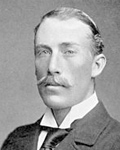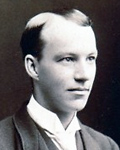FEATURED
Maxwell Park and Pollokshields Burgh Hall
Maxwell Park and Pollokshields Burgh Hall have a fascinating history, involving barrage balloons, West Indies slave plantations, and freemasons.
Maxwell Park
In 1887, Scottish politician, baronet, and philanthropist Sir John Stirling Maxwell gifted the land that is now Maxwell Park to the burgh of Pollokshields, for the development of Pollokshields Burgh Halls and public gardens. The area was entirely agricultural until 1850. The park contains a variety of different plants and flowers that were taken from the gardens of his home Pollok House, in what is now Pollok Country Park. These species are believed to have been brought back from around the world by botanist and explorer George Forrest. Many of the flowers can be found in the ornamental bed that used to be the base of the Hamilton memorial fountain. Forrest’s expeditions to the Himalayas were responsible for many unique species becoming part of Scotland’s garden heritage at Pollok House and the Royal Botanic Garden Edinburgh. Building on this heritage, the community launched a plant nursery with the support of the Friends of Maxwell Park in 2012.
Not many people know that there was a barrage balloon mooring site in the South West section of Maxwell Park. This site was part of a network that protected the people and war-time industry of central Glasgow and the Clyde from low flying enemy bombers during World War II. The park has many significant features including Pollokshields Burgh Hall, ornamental horticultural bedding displays, a formal play area, and a commemorative George Forrest display plant bed. There’s also a pond with wildlife, and what the local Helen Millar and her friends called the ‘elephant stone’, when growing up – a large rock for children to play on – nearby.
The Stirling Maxwells
The Maxwells/Stirling Maxwells of Pollok House in Pollok Park were one of the most eminent families in South Glasgow. Sir John Maxwell, 2nd Baronet, had Pollok House (now A listed) built from 1747-1752. The 10th Baronet, Sir John Stirling Maxwell (1866-1956) inherited Pollok House in 1887, and opened the estate to the public in 1911. He gifted land that now contains Maxwell Park to the burgh of Pollokshields in 1887; you can still see the Maxwell family motto, ‘Do Good While the Holly is Green,’ carved on the wall of Pollokshields Burgh Hall (also A listed), in the park. He was Chairman of the Royal Fine Art Commission for Scotland, and a Trustee of the National Galleries of Scotland, one of the founding members of The National Trust (and one of its first Presidents) and became a noted art collector. After he died in 1956, his daughter Anne gave Pollok House, the art collection, library, and 361 acres of surrounding land, to the City of Glasgow.
Links to Slavery
The Stirling Maxwells inherited their wealth in part from Archibald Stirling the elder (1710-1783), who made his fortune through his sugar plantations, using slave labour, in Jamaica. Archibald Stirling the younger (1768-1847) was also planter and slaveowner in Jamaica. After the British Abolition of Slavery Act of 1833 the younger Archibald Stirling was awarded £12,517 in compensation (over £50 million in today’s money) for the 690 enslaved people across his estates: Hampden in St. James, Frontier in St. Mary, Kerr or Keir Settlement in Trelawney, and Grange Hill in Westmoreland, all in Jamaica. He returned to Scotland and married Elizabeth Maxwell (daughter of Sir John Maxwell (7th Baronet) and sister of Sir John Maxwell (8th Baronet of Pollok). Their son Sir William Stirling of Keir went on to become Sir William Stirling Maxwell (9th Baronet of Pollok). You can learn more about this family in our July 2020 blog on the Maxwells.
Architect Henry Clifford
Pollokshields Burgh Hall was exhibited in 1890, and officially complete in 1893, to a design by architect Henry (Harry) Edward Clifford (1852-1932). Clifford has connections to slavery both through his family and his work for the Stirling Maxwells. He was born in Trinidad to a family of sugar plantation holders. When his father died, the Cliffords moved to Glasgow. He studied and taught at Glasgow School of Art, won prizes for his work, and set up his architecture partnership Landless & Clifford, before going solo. He lived with his mother and sisters in Pollokshields. Clifford achieved national fame in 1901 by winning the Glasgow Royal Infirmary competition, although the commission was eventually given to James Miller. Clifford designed Pollokshields Burgh Hall in the Scottish Renaissance style. He clearly remembered his time in the Caribbean fondly as well, and named two of his buildings Woodbrook House after the Trinidad estate, one on Elphinstone Road, Whitecraigs, the other at Reigate.
Pollokshields Burgh Hall
The A listed halls form an asymmetrical composition of 17th-century towers and wings, made of dark red sandstone (in contrast to the blond sandstone of many surrounding villas). The buildings include an adjoining Jacobean lodge (refurbished 1996), and gate leading to the Maxwell Park drive. The Maxwell coat of arms appears on the entrance archway, flanked by lions, and is set in marble on the floor of the building entrance. You can see Maxwell’s motto ‘Do Good While the Holly is Green’ carved on the wall outside the building, and in the large east window. The halls feature a range of stained glass windows gifted by Pollokshields residents, a Venetian window, a 1935 west window bearing the emblem of the Corporation of Glasgow, and 17th-century-style Masonic stained glass. The building is maintained by Pollokshields Burgh Hall Trust.
Freemasons
The building has been used as a masonic lodge since it was built, and the arch built into the back wall displays several carved Masonic emblems and the Masonic symbol. The Memorial Window in the main hall depicts the glory of the afterlife, with the two pillars on the side panels representing the entrance to the Sanctum. The inscription on the centre panel reads:
“To the memory of departed brethren”.
The Minor Hall features a window dedicated to Saint John, Patron Saint of Freemasonry with the motto ‘Gloria in Excelsis’, presented by Morris Carswell, First Master of Lodge Pollok. The other window is dedicated to St. Andrew the Patron Saint of Scotland, with the motto ‘Virtute in Silentio’, and was also presented by a freemason, David R. Clark. Both windows display masonic emblems, and were gifted in 1890.
Southside Slavery Legacies project 2020
South Glasgow Heritage and Environment Trust are currently working on the #SouthsideSlaveryLegacies project, including a potential heritage trail and walks, as well as blogs on our website, and published articles.
If you would like to know more or become involved, please subscribe to our mailing list, message us on Facebook or Twitter or contact info@sghet.com
Sources:
Canmore: Pollokshields Burgh Hall
Legacies of British Slave-ownership
Slavery, Abolition and the University of Glasgow
Discover unmatched pleasure with Rose Toy – Visit https://www.rose-toy.co/ and explore our premium collection today!











no replies